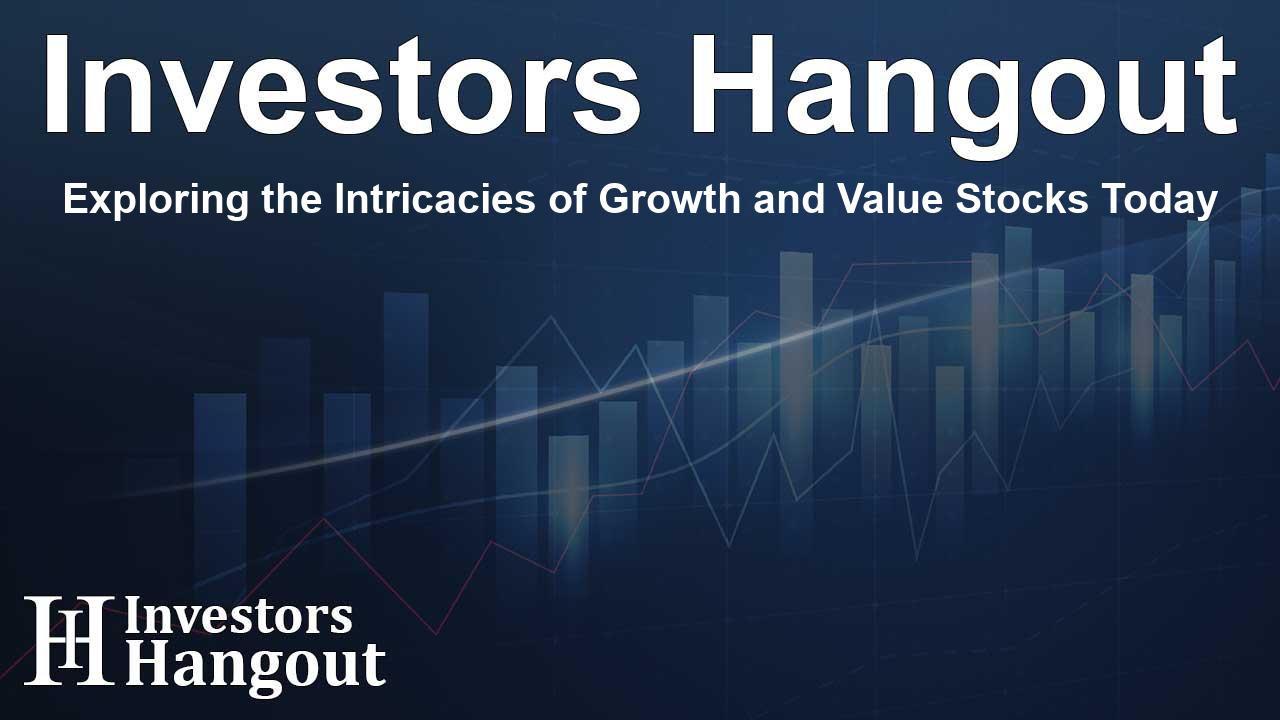Exploring the Intricacies of Growth and Value Stocks Today

Understanding Growth and Value in Today’s Market
When considering popular stocks like Nvidia (NASDAQ: NVDA) and Tesla (NASDAQ: TSLA), many investors ponder their classification. With much higher price-to-earnings (P/E) ratios than the S&P 500, it beckons the question: can these be termed value stocks? Conversely, Ford (NYSE: F), with its considerably lower P/E ratio, faces its own classification dilemma. Most would quickly label Nvidia and Tesla as growth stocks, while Ford is often considered a value stock, but is this perspective accurate?
This article ventures into the concept of GARP—Growth at a Reasonable Price. By integrating earnings growth expectations into typical valuation methods, we may find that some stocks perceived as value may not hold as much potential as investors wish, while certain growth stocks could fit the value category as well.
Defining Value and Growth
Investopedia describes a value stock as one that trades at a lower price relative to key fundamentals such as earnings or sales. It's common for investors to liken value stocks to being "cheap." Meanwhile, a growth stock is identified as a share in a company poised to grow at a rate significantly surpassing the market average. This is an accepted definition among investors, and many would agree that growth stocks often carry high valuations.
Both terms, value and growth, are commonly used by investors, yet stocks seldom get categorized under both labels at once. This division could potentially obscure analytical perspectives and limit investor options based on their objectives.
The Importance of the PEG Ratio
There are several well-known equity valuation metrics used in stock analysis:
- Price to Earnings (P/E)
- Price to Forward Earnings (P/FE)
- Price to Sales (P/S)
- Price to Book Value (P/BV)
- Price to Free Cash Flow (P/FCF)
These ratios provide valuable insights into how much investors are willing to pay for specific fundamentals in a stock. However, these metrics mainly rely on historical data, except for the P/FE, which utilizes forward-looking earnings projections for the next year.
While a company's historical performance remains relevant, stock trading should primarily reflect future potential. Thus, considering expected growth should take precedence when valuing investments.
The PEG (price/earnings to growth) ratio serves as a helpful tool to gauge a stock's value by comparing its P/E ratio to expected growth rates. Typically, estimates for expected growth over three to five years contribute to the PEG calculation.
Analyzing the PEG Ratio
Analyzing data from over 450 stocks in the S&P 500 provides clarity on the PEG ratio. After excluding stocks with negative or unreasonable forward P/E ratios, we can see that each data point reveals insights about stock valuation and future growth. The S&P 500's current forward P/E stands at 24.26 with expected earnings growth of 15.5%, giving it a PEG ratio of about 1.56.
Visualizing this data helps investors discern value in relation to potential. A traditional view holds that a PEG ratio below 1.0 is indicative of a stock being valued. Notably, only about 12.25% of stocks are currently under this threshold.
Value and Growth: A Closer Look
To deepen our understanding of the PEG ratio's implications, let’s turn attention to specific stocks:
American International Group (NYSE: AIG) has a notably low forward P/E of 11, making it seem like a value stock. However, a mere expected earnings growth of 2% leads to a PEG ratio of 5.50, indicating it’s overpriced.
Tesla (TSLA) boasts a high forward P/E of 142, but its growth forecast of just 21% raises questions about its valuation. This discrepancy suggests that it could either be wildly overvalued or, if it performs well beyond expectations, be a hidden value opportunity.
Amazon (NASDAQ: AMZN) presents an interesting case. Its forward P/E is 28 with expected growth around 35%, positioning it as a value stock despite its seemingly high valuation.
First Solar (NASDAQ: FSLR) shows a low forward P/E of 9 alongside an impressive growth rate of 43%, positioning it as a deep-value growth stock with a PEG of 0.20.
Everest Re Group (NYSE: EG) illustrates a different scenario with a low P/E of 5, remained balanced against low growth expectations, resulting in a PEG of 1.56. This leads to a similar valuation compared to the S&P 500.
Live Nation Entertainment (NYSE: LYV) also aligns with the market average through a high forward P/E of 54, complemented by optimistic growth expectations and a resulting PEG of 1.56.
Wrapping Up the Analysis
By revisiting the classifications of stocks like TSLA, NVDA, and F, we unveil fresh insights. Based on our findings, while TSLA remains an enigma, NVDA emerges surprisingly as a value stock with a PEG under 1.0.
Contrastingly, Ford’s valuation metrics indicate it has a PEG of 1.86, implying it's not classified as a value stock despite appearances. The notion of value is inherently subjective, and what might seem apparent can often mask deeper investment truths.
Through ongoing evaluation and by utilizing multiple growth forecasts, investors can build a more informed perspective in navigating the market landscape.
Frequently Asked Questions
What is the difference between growth and value stocks?
Growth stocks are expected to grow at a rate above the market average, while value stocks trade at lower prices relative to their fundamentals.
How does the PEG ratio help in stock valuation?
The PEG ratio compares a company's P/E ratio to its expected earnings growth rate, aiding investors in assessing its valuation relative to future performance.
Can a stock be both a growth and value stock?
Yes, some stocks may exhibit characteristics of both categories, making analysis more complex and sometimes misleading.
What role does expected growth play in stock investing?
Expected growth is crucial as it reflects a company's potential profitability and market positioning, guiding investors in making informed decisions.
Why might traditional valuation metrics be limiting?
Traditional metrics often rely on historical data, which can obscure future growth prospects and undervalue stocks with strong potential.
About The Author
Contact Hannah Lewis privately here. Or send an email with ATTN: Hannah Lewis as the subject to contact@investorshangout.com.
About Investors Hangout
Investors Hangout is a leading online stock forum for financial discussion and learning, offering a wide range of free tools and resources. It draws in traders of all levels, who exchange market knowledge, investigate trading tactics, and keep an eye on industry developments in real time. Featuring financial articles, stock message boards, quotes, charts, company profiles, and live news updates. Through cooperative learning and a wealth of informational resources, it helps users from novices creating their first portfolios to experts honing their techniques. Join Investors Hangout today: https://investorshangout.com/
The content of this article is based on factual, publicly available information and does not represent legal, financial, or investment advice. Investors Hangout does not offer financial advice, and the author is not a licensed financial advisor. Consult a qualified advisor before making any financial or investment decisions based on this article. This article should not be considered advice to purchase, sell, or hold any securities or other investments. If any of the material provided here is inaccurate, please contact us for corrections.
